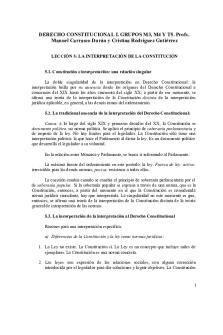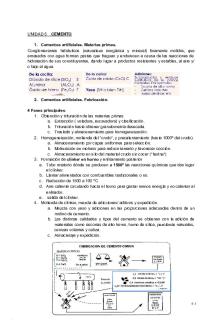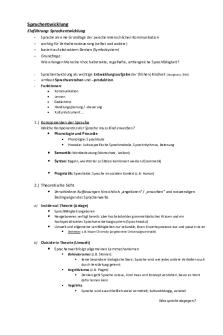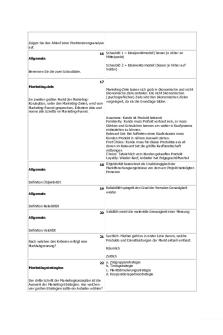Protocols 5 - föreläsningsanteckningar 5 PDF

| Title | Protocols 5 - föreläsningsanteckningar 5 |
|---|---|
| Course | Bioinformatics |
| Institution | Kungliga Tekniska Högskolan |
| Pages | 2 |
| File Size | 140.3 KB |
| File Type | |
| Total Downloads | 46 |
| Total Views | 169 |
Summary
Metagenomics protocol 5...
Description
92
James Doonan et al.
Fig. 1 Flowchart beginning with metagenomic sequencing data. Step 1—Data QC. Step 2—Measure relative species abundance, depicted here using MetaPhlan2 (as part of the HUMAnN software package) and illustrated with a heatmap of the top 100 species present at the genus and species level from healthy and unhealthy plant microbiomes, and a Krona plot [43] of all taxonomic levels. Step 3—Functional analysis, illustrated with output from HUMAnN2, with sample sequences from healthy and unhealthy plant microbiomes aligned against the MetaCyc database. General annotation is helpful for taxonomic and functional data overview illustrated here with PROKKA and MG-RAST. Specific annotation provides a closer examination of community function examining genes/pathways of interest such as PCWDE using the CAZy database, here through dbCAN, and secretion systems using T346Hunter, illustrated within a genome
installable genomic and metagenomic annotation pipeline, Prokka [ 23]. This customizable Unix based annotation program can incorporate private genomes without adding them to a public database. It requires assembled metagenome Fasta files as input and provides extensively annotated data files in various formats for use in downstream applications such as the genome browser Artemis [ 45]. Furthermore, tabulated output data can be easily converted for visualization in the genome aesthetic program Circos [ 46]. Circos can display an array of coordinate dependent data such as metagenomic contigs with aligned annotations or metagenome annotations aligned to individual genomes (Fig. 2). 3. Using standalone BLAST (Basic Local Alignment Search Tool) [47], to query an assembled, structurally annotated metagenome dataset against a locally installed database, remains one of the best methods to understand the relative abundance and functional profile of individual bacteria within a metagenome. This method allows manageable, fine scale analysis of annotated
Metagenomic Analysis of Soft-Rot Enterobacteriaceae
93
50
0k
b
5500 kb
450
0 kb
35
00
kb
1500 kb
2500 kb
Fig. 2 Circos plot of an annotated bacterial genome with aligned homologous metagenome coding domains. From outer ring; bacterial chromosome, annotated genes, metagenome annotations from several libraries (libraries distinguished by specific color), GC content , GC skew
genes of interest, which can be an important consideration when dealing with prodigious datasets. A compiled database of bacterial proteins (or genes) of interest, queried (using stringent cut-offs) by metagenomic proteins will retrieve homologs between the metagenome and the bacteria, allowing an understanding of the relationship of one or a small number of bacteria to the relative abundance and functional profile of the metagenome. This method is demonstrated using a Circos plot, where a metagenome has been queried against a bacterium (Fig. 2). 4. The Human Microbiome Project Unified Metabolic Analysis Network (HUMAnN) is a functional and taxonomic prediction program, originally developed for the human microbiome project by the Huttenhower lab as part of the bioBakery suite of microbiome tools [ 24]. HUMAnN2 is an updated extension of this program which can be applied to any sequenced bacterial community. HUMAnN2 first measures relative abundance through MetaPhlan2, then reconstructs the metabolic potential of bacterial communities, based on a large collection...
Similar Free PDFs

5
- 4 Pages

5
- 1 Pages

Test 5 - Test 5
- 6 Pages

TEMA 5 - Apuntes 5
- 2 Pages

5 Heladas - Apuntes 5
- 17 Pages

Session 5 - ELS 5
- 2 Pages

TEMA 5 - Apuntes 5
- 3 Pages

Leccion 5 - Apuntes 5
- 10 Pages

5. Cementos - Apuntes 5
- 10 Pages

TEMA 5 - Apuntes 5
- 6 Pages

TEMA 5 - Apuntes 5
- 2 Pages

Chapter 5 quiz #5
- 2 Pages

TEMA 5 - Apuntes 5
- 5 Pages
Popular Institutions
- Tinajero National High School - Annex
- Politeknik Caltex Riau
- Yokohama City University
- SGT University
- University of Al-Qadisiyah
- Divine Word College of Vigan
- Techniek College Rotterdam
- Universidade de Santiago
- Universiti Teknologi MARA Cawangan Johor Kampus Pasir Gudang
- Poltekkes Kemenkes Yogyakarta
- Baguio City National High School
- Colegio san marcos
- preparatoria uno
- Centro de Bachillerato Tecnológico Industrial y de Servicios No. 107
- Dalian Maritime University
- Quang Trung Secondary School
- Colegio Tecnológico en Informática
- Corporación Regional de Educación Superior
- Grupo CEDVA
- Dar Al Uloom University
- Centro de Estudios Preuniversitarios de la Universidad Nacional de Ingeniería
- 上智大学
- Aakash International School, Nuna Majara
- San Felipe Neri Catholic School
- Kang Chiao International School - New Taipei City
- Misamis Occidental National High School
- Institución Educativa Escuela Normal Juan Ladrilleros
- Kolehiyo ng Pantukan
- Batanes State College
- Instituto Continental
- Sekolah Menengah Kejuruan Kesehatan Kaltara (Tarakan)
- Colegio de La Inmaculada Concepcion - Cebu


